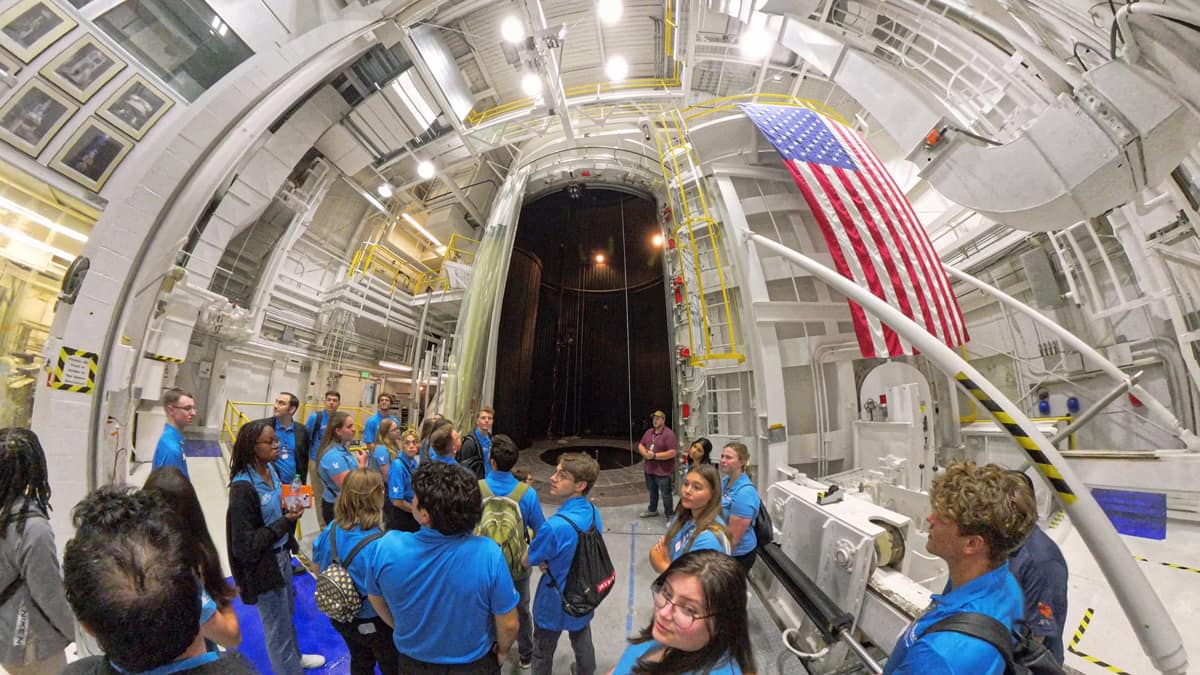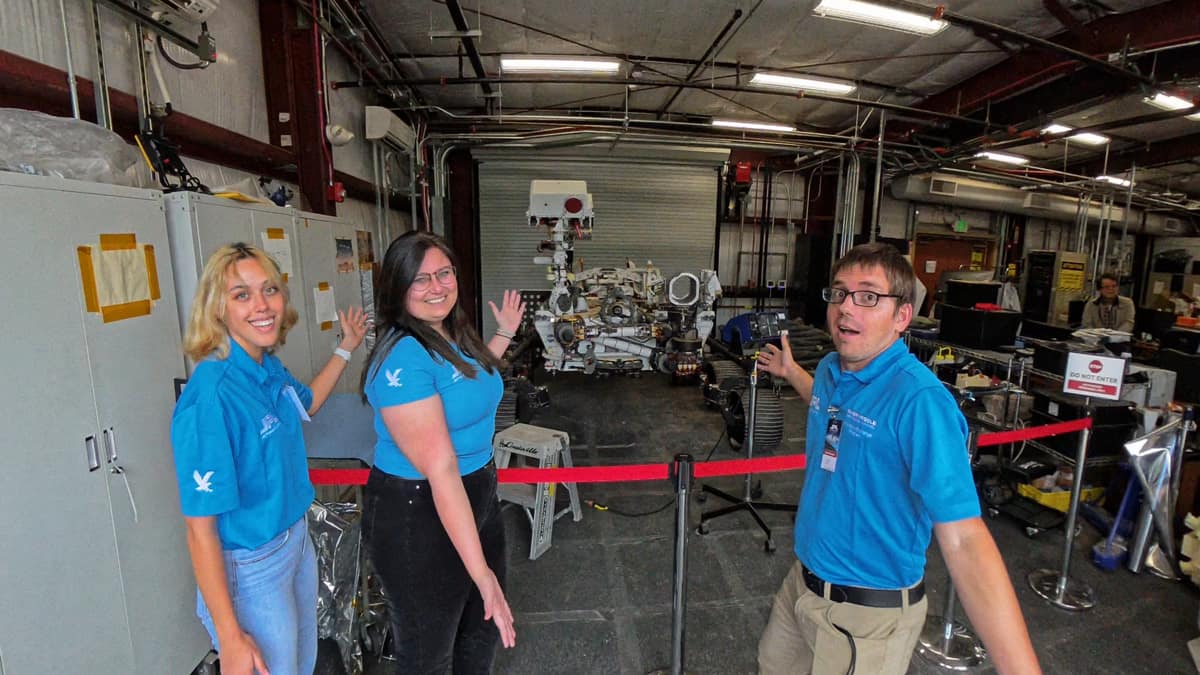Embry-Riddle Students to Experience World-Class Space Technologies at NASA’s Jet Propulsion Laboratory

Embry-Riddle and NASA’s Jet Propulsion Laboratory (JPL) are continuing an academic exchange program open to students in the College of Engineering that has led to internships at JPL and sparked collaborative research involving the university and the lab.
The program, now in its third year, sends students chosen through a competitive application process to JPL in Pasadena, California, to meet and interact with the lab’s research teams about current and future NASA missions.
This year’s trip to JPL will take place from May 11 to 14.
“This experience will not only enrich our students’ space technology and science awareness and proficiency, but also will offer a unique opportunity to network with the JPL community,” said Dr. Eduardo Rojas, program organizer and associate professor in the Department of Electrical Engineering and Computer Science.
Ph.D. student Sam LeBlanc participated in the first year of the JPL-ERAU Academic Exchange Program. As a result of the program and after being named a NASA M-STAR (Minorities in Space Technology Artemis Research) Fellow, he was awarded a JPL internship that applied his expertise to create metasurface antennas — high-performance miniaturized antennas made of materials that can be integrated into thin, flat surfaces for space missions.
During his internship, LeBlanc not only had the opportunity to expand his knowledge, he also was able to share his own expertise with JPL researchers. He reported that he had “presented to multiple groups within JPL to introduce the concept of 3D-printed electronics, as it is still a relatively unknown concept.”

Embry-Riddle students (from left) Serena Conticello, Hannah Ramsden, and Quentin Goss point toward the OPTIMISM Mars rover. (Photo: Embry-Riddle/Eduardo Rojas)
Rojas referred to JPL internships as stellar opportunities for students to get hands-on experience working with world-class space industry professionals, while amplifying their contacts in the aerospace engineering field.
Rachel Swan, a senior in Electrical Engineering with minors in Applied Mathematics, Project Management and Systems Engineering, said participating in the 2023 exchange program was inspiring.
“It allowed me to see state-of-the-art space technologies while also giving me a chance to meet the engineers at JPL, so I could ask questions and learn from them,” Swan said. “JPL has so many different space technologies that they are working on, from moon rovers to antennas to a snake robot they are developing to potentially explore Enceladus with. My favorite thing about JPL is they are so innovative and creative; I don't think there are many places in the world where they are doing this type of research for space exploration.”
After the program, Swan had internships the next two summers in the commercial space industry: at United Launch Alliance and in government/military space operations at the U.S. Army Space and Missile Defense Command (USASMDC).
Swan has accepted a position as an electrical engineer at the Technical Center of USASMDC. The job is due to start this summer, pending the federal hiring freeze.
The exchange program is supported by the dean’s office of the College of Engineering and pays for the students’ travel to JPL. The JPL Center for Academic Partnerships finances a second part of the program, during which JPL researchers visit Embry-Riddle, where they present their latest research findings, tour Embry-Riddle research facilities and meet with faculty and students to discuss future research collaborations and internship and postdoctoral opportunities at JPL.
Dr. Jim Gregory, dean of the College of Engineering, expressed his enthusiasm for the exchange program.
"The College of Engineering is delighted to be collaborating with JPL to facilitate a pipeline of talent to JPL and explore research collaboration opportunities with our outstanding faculty,” Gregory said. “We're grateful to JPL for their visionary support of this collaborative initiative, and look forward to the innovative ideas and partnerships that emerge."
The program has so far brought about a number of collaborative research projects. Rojas pointed out that JPL works in many research areas, including robotics, dynamics and controls, systems engineering, antenna and radio-frequency engineering, thermal and reliability engineering, cybersecurity, photonics sensors and autonomous vehicles.
“This exciting opportunity is aligned with the growing stature and quality of our students and faculty members in space research fields,” Rojas said. “We consider this academic exchange program the beginning of a fruitful, close and long interaction between the JPL and Embry-Riddle communities.”

 Michaela Jarvis
Michaela Jarvis